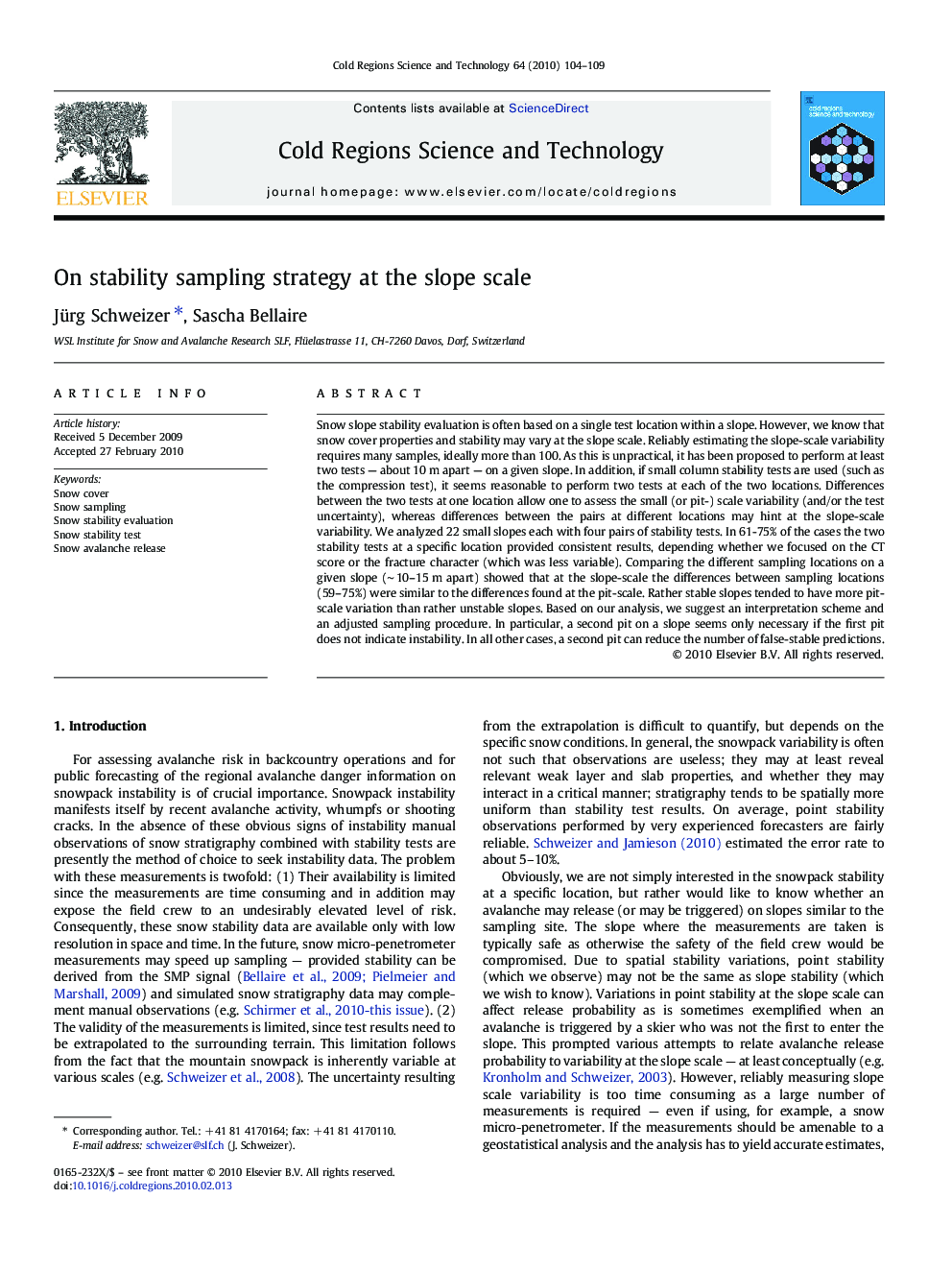| کد مقاله | کد نشریه | سال انتشار | مقاله انگلیسی | نسخه تمام متن |
|---|---|---|---|---|
| 4676234 | 1347745 | 2010 | 6 صفحه PDF | دانلود رایگان |
عنوان انگلیسی مقاله ISI
On stability sampling strategy at the slope scale
دانلود مقاله + سفارش ترجمه
دانلود مقاله ISI انگلیسی
رایگان برای ایرانیان
موضوعات مرتبط
مهندسی و علوم پایه
علوم زمین و سیارات
علوم زمین و سیاره ای (عمومی)
پیش نمایش صفحه اول مقاله

چکیده انگلیسی
Snow slope stability evaluation is often based on a single test location within a slope. However, we know that snow cover properties and stability may vary at the slope scale. Reliably estimating the slope-scale variability requires many samples, ideally more than 100. As this is unpractical, it has been proposed to perform at least two tests - about 10 m apart - on a given slope. In addition, if small column stability tests are used (such as the compression test), it seems reasonable to perform two tests at each of the two locations. Differences between the two tests at one location allow one to assess the small (or pit-) scale variability (and/or the test uncertainty), whereas differences between the pairs at different locations may hint at the slope-scale variability. We analyzed 22 small slopes each with four pairs of stability tests. In 61-75% of the cases the two stability tests at a specific location provided consistent results, depending whether we focused on the CT score or the fracture character (which was less variable). Comparing the different sampling locations on a given slope (â¼Â 10-15 m apart) showed that at the slope-scale the differences between sampling locations (59-75%) were similar to the differences found at the pit-scale. Rather stable slopes tended to have more pit-scale variation than rather unstable slopes. Based on our analysis, we suggest an interpretation scheme and an adjusted sampling procedure. In particular, a second pit on a slope seems only necessary if the first pit does not indicate instability. In all other cases, a second pit can reduce the number of false-stable predictions.
ناشر
Database: Elsevier - ScienceDirect (ساینس دایرکت)
Journal: Cold Regions Science and Technology - Volume 64, Issue 2, November 2010, Pages 104-109
Journal: Cold Regions Science and Technology - Volume 64, Issue 2, November 2010, Pages 104-109
نویسندگان
Jürg Schweizer, Sascha Bellaire,